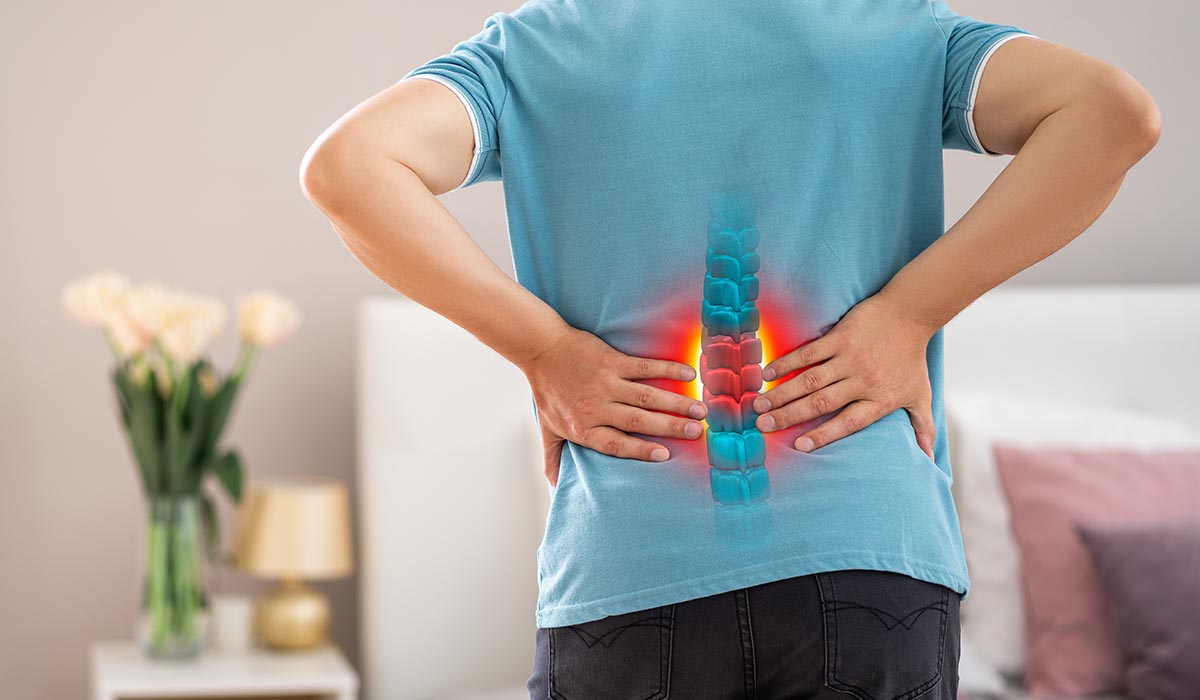Slip disc and sciatica are two common conditions that cause discomfort and pain, particularly in the lower back and legs. These conditions can significantly impact daily life, making it challenging to perform routine activities. However, with advancements in medical science and specialized pain management techniques, relief is possible. In this blog, we will explore what slip disc and sciatica are, their symptoms, causes, and effective treatments to alleviate spinal nerve pain. Additionally, we’ll discuss how NEXUS Advanced Pain Management can provide comprehensive care and support for individuals dealing with these conditions.
Understanding Slip Disc and Sciatica
Slip Disc (Herniated Disc)
A slip disc occurs when the soft, gel-like center of a spinal disc bulges out through a tear in the outer layer. This can lead to nerve compression, causing pain, numbness, and discomfort. The condition is most common in the lower back, although it can also occur in the cervical (neck) and thoracic regions.
Sciatica
Sciatica refers to pain that radiates along the path of the sciatic nerve, which runs from the lower back down through the hips and buttocks and down each leg. It is often caused by a herniated disc, bone spurs on the spine, or narrowing of the spinal canal (spinal stenosis). Sciatica affects one side of the body and may result in sharp, shooting pain that worsens with movement.
Symptoms of Slip Disc and Sciatica
The symptoms of slip disc and sciatica can vary depending on the severity and location of the affected nerve roots.
Slip Disc Symptoms:
- Persistent or intermittent back pain
- Numbness or tingling in the affected area
- Muscle weakness in the legs or arms
- Difficulty in moving or bending
- Pain worsens with specific movements or prolonged sitting/standing
Sciatica Symptoms:
- Sharp, burning pain along the path of the sciatic nerve
- Pain may extend from the lower back down to the foot
- Tingling, numbness, or weakness in the legs
- Discomfort worsens when bending, coughing, or sneezing
Causes of Slip Disc and Sciatica
Causes of Slip Disc:
- Aging and wear and tear on the spine
- Trauma or injury to the spine
- Sedentary lifestyle or poor posture
- Obesity, which places additional pressure on the spine
- Repetitive stress from heavy lifting or twisting movements
Causes of Sciatica:
- Herniated or slipped disc
- Bone spurs pressing against the sciatic nerve
- Spinal stenosis (narrowing of the spinal canal)
- Spinal injuries or trauma
- Muscle inflammation or piriformis syndrome
Effective Treatments for Slip Disc and Sciatica
- Physical Therapy
Physical therapy plays a crucial role in managing slip disc and sciatica. A trained physiotherapist can guide patients through exercises aimed at strengthening the core muscles, improving flexibility, and reducing pressure on the affected nerves. Techniques such as stretching, low-impact aerobic exercises, and manual therapy can significantly alleviate pain and prevent recurrence.
- Medications
Medications such as non-steroidal anti-inflammatory drugs (NSAIDs), muscle relaxants, and pain relievers are often prescribed to manage inflammation and relieve pain. For more severe cases, corticosteroid injections may be recommended to reduce nerve inflammation and provide relief from sciatica.
- Epidural Steroid Injections (ESIs)
Epidural steroid injections are an effective method for treating inflammation around the affected spinal nerve. These injections deliver medication directly to the epidural space, where the sciatic nerve is located. By reducing swelling and irritation, ESIs help alleviate pain and improve mobility.
- Lifestyle Modifications
Adopting healthy lifestyle habits can greatly reduce the risk of slip disc and sciatica. Maintaining a balanced diet, avoiding heavy lifting, managing weight, and maintaining proper posture are essential steps in prevention and management. Regular physical activity tailored to the individual’s condition can also improve spinal health.
- Advanced Pain Management Techniques
Advanced pain management techniques such as radiofrequency ablation, spinal decompression therapy, and nerve blocks offer promising relief for chronic spinal nerve pain. These methods target the root cause of discomfort, providing long-lasting relief for individuals struggling with slip disc or sciatica.
Why Choose NEXUS Advanced Pain Management?
At NEXUS Advanced Pain Management, we specialize in providing personalized treatment plans for individuals dealing with slip disc and sciatica. Our multidisciplinary approach integrates state-of-the-art technology and experienced specialists to deliver effective, compassionate care. From physical therapy and medication management to advanced interventional techniques, we strive to alleviate pain and restore functionality. With a patient-centered approach, we ensure that every individual receives comprehensive support tailored to their unique needs. If you’re looking for relief from spinal nerve pain, NEXUS Advanced Pain Management is here to help you on your journey to recovery.

